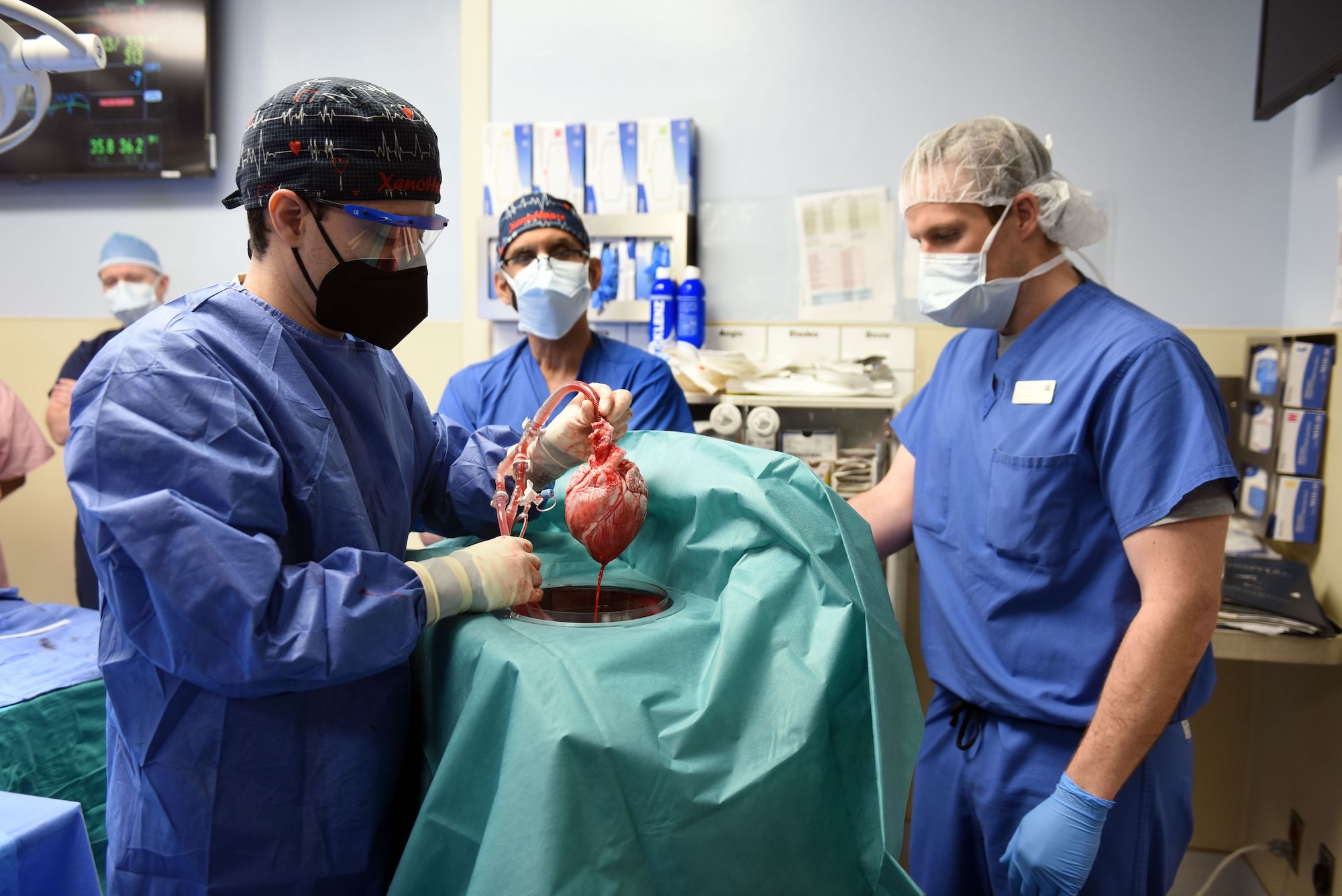The heart of a genetically modified pig which was transplanted by the team of the University of Maryland beats regularly inside David Bennett’s chest. The 57-year-old man with life-threatening heart disease had a xenotransplantation led by Bartley Griffith, a specialized surgeon and Professor at UMSOM, when any other option, including traditional transplantation and implant of an artificial heart pump, was excluded due to the extreme seriousness of his conditions.
“It was either die or do this transplant. I want to live. I know it’s a shot in the dark, but it’s my last choice,” said Mr. Bennett, the patient, a day before the surgery was conducted.
“It was a revolutionary surgery and takes us closer to the solution of the shortage of organs. Basically we do not have enough human hearts to satisfy the long list of potential recipients”, said Griffith. “We are proceeding with caution but we are optimistic about the fact that this world-first surgery will give an important new option for patients in the future”.
“This is the culmination of years of highly complicated research to hone this technique in animals with survival times that have reached beyond nine months”, added Dr. Muhammad M. Mohiuddin, Professor of Surgery at UMSOM and scientific director of the programme of xenotransplantation of the American university.
“The FDA used our data to authorize the transplant. The procedure provided precious information to help the medical community improve this potentially life-saving method in future patients”, explained Mohiuddin.
This transplant showed for the first time that a genetically modified animal heart can work as a human heart without an immediate rejection of the patient. The procedure, tested for the first time in the 1980s on an infant born with a fatal heart condition, Stephanie Fae Beauclair, was abandoned for years, although in heart surgery pig heart valves have been used successfully for replacing human heart for years.
The genetically modified pig was provided by a regenerative medicine company based in Virginia. The day of the surgery the team removed the pig’s heart and placed it in the perfusion device XVIVO Heart Box, until the moment of its implant.
“I can’t wait to get up after recovering”, said Bonnett. The patient will now be “constantly followed in the next weeks to verify whether the transplant provides lifesaving benefits”.
Photo credits: University of Maryland School of Medicine

